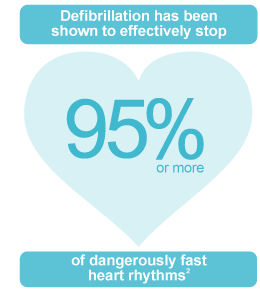Il primo e spesso unico sintomo di arresto cardiaco improvviso è la perdita di coscienza (svenimento) dovuta alla mancanza di sangue al cervello. Contemporaneamente, non si avverte il battito cardiaco o il polso.
Anche se spesso non si hanno segnali di avvvertimento immediatamente prima del verificarsi di un arresto cardiaco improvviso è possibile che alcuni sintomi si siano manifestati precedentemente, come quelli riportati di seguito:
- Stanchezza o debolezza
- Dispnea (respiro affannoso)
- Svenimento
- Capogiri o stordimenti
- Palpitazioni del cuore
- Dolore toracico
Alcune persone di cui può essere stato riferito che siano morte per "grave attacco cardiaco" potrebbero, invece, essere decedute in seguito ad un arresto cardiaco improvviso.
Probabilità di sopravvivenza
The definitions of Sudden Cardiac Arrest and heart attack are completely different. A heart attack is a "plumbing" problem caused by one or more blockages in the heart's blood vessels that prevent proper flow. A person having a heart attack is awake and breathing.


